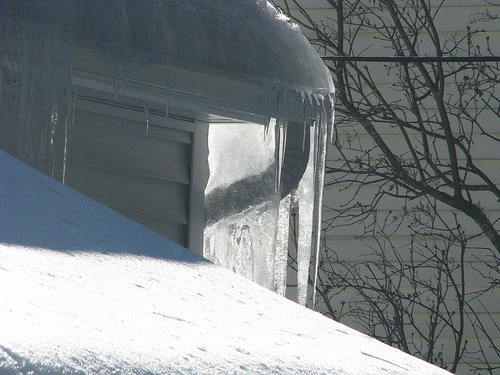
The formation of ice dams on the roof can spell disaster for any homeowner and is an issue that must be solved quickly. Ice dams are the name referring to the buildup of ice on the eaves of the roof which can cause standing water to be caught on the shingles. How do ice dams […]
TRA will be presenting an open snow retention lunch and learn with the Associated General Contractors of Utah on February 12th, from 11:30 am to 1:00 pm. This lunch and learn is open to anyone who would like to attend. The cost for AGC members is $15 and for non-members is $20 which includes lunch. […]
A question once asked – On the roofs of many houses, along the eave, there are…best as I can describe it… shaped thingies. I’ve seen others that look octagonal and yet others that are round. I’ve seen them on steep roofs and not-so-steep roofs. My bank even has them. They look great, but do they do anything? […]
Snow retention codes do not seem to be a priority in the United States’ roofing industry. But it is very common to see snow and ice sliding off of a metal roof’s slippery surface. Snow and ice crush cars, and damages the roof, gutters, and landscape. In some cases, snow and ice cascading off roofs […]
Every once in a while a customer will ask us why they should purchase our metal snow retention rather than the plastic ones they see. We typically don’t like plastic snow guards for many reasons. The first reason is because of the type of adhesive used to attach plastic snow guards. Through our testing, we have found that failure […]
Take a look at these pictures for a fresh new snow guard clamp-on look. Our black Xylan hardware is now available for any colored clamp-on. Would this be your new snow retention look? Tell us by a simple comment on our contact page… Color Trends… XYLAN BLACK HARDWARE BENEFITS New specialized color option for any […]
Just as the world-class athletes prepare for an incoming storm of opponent competition, so should we prepare for all possibilities to keep incoming snow and ice from roof avalanching. Keeping snow and ice from avalanching off a roof requires a system of superior strength. When strength really does matter to save lives and prevent […]
There are several factors that one must evaluate when determining if a particular building requires a snow retention system. The first question you should pose is “What would happen if snow slides off the roof?” The second question is “Do we care?” When snow slides off of a roofing surface, it can come crashing down or slide off and […]
WOW! Look at all that snow in Atlanta. As you watch the Falcons play football from your comfy home you know you’re safe and protected from dangerous weather. What about if you attended the game in person? How safe are you? Just as the world-class Falcons prepare for the possibility of an incoming storm of […]
Winter is on its way and snow accumulation is imminent across the U.S. The traditional approach to snow accumulation on homes and businesses is to remove it or allow it to slide off as it softens and melts. Unfortunately, this approach can lead to injuries or property damage and is not optimal for home energy […]